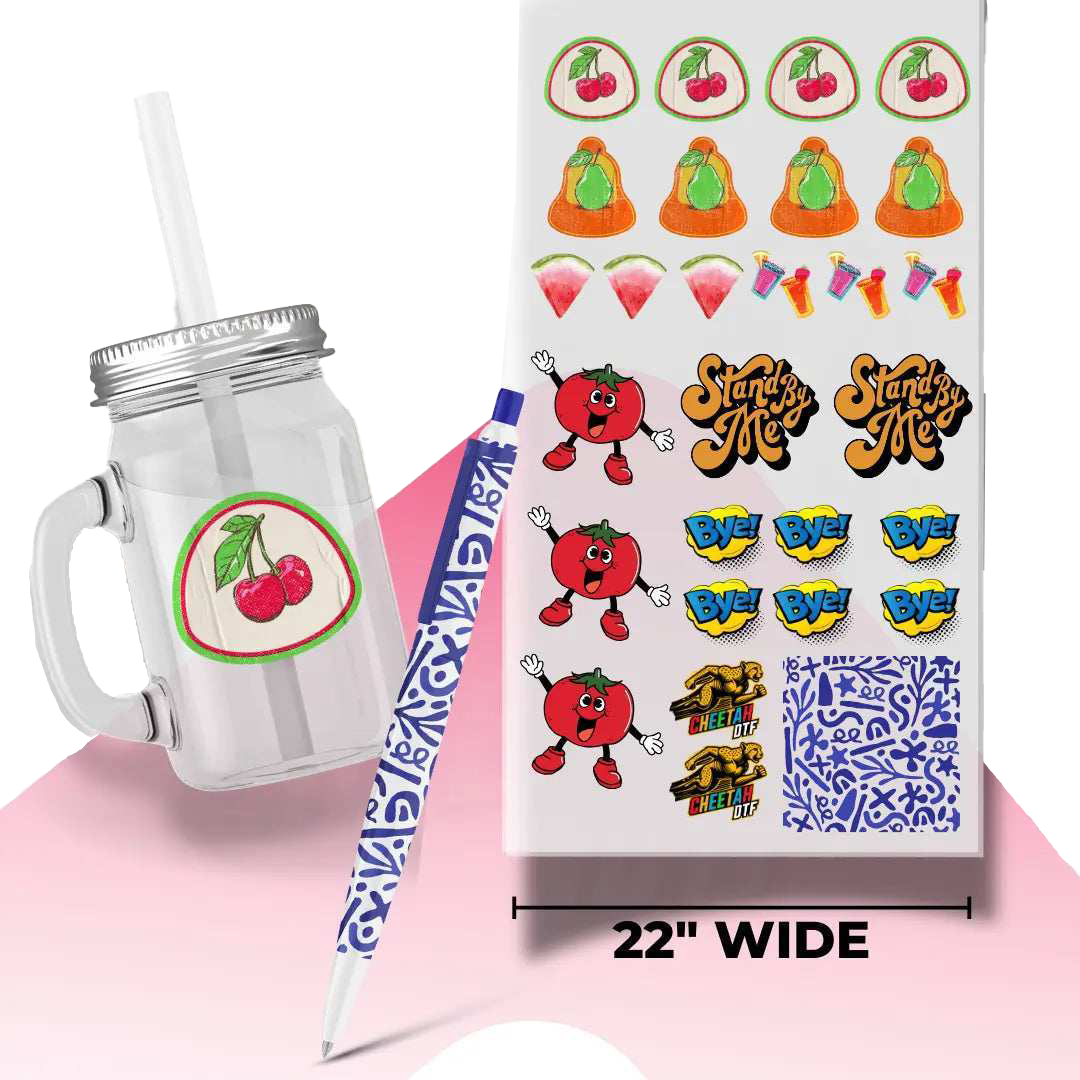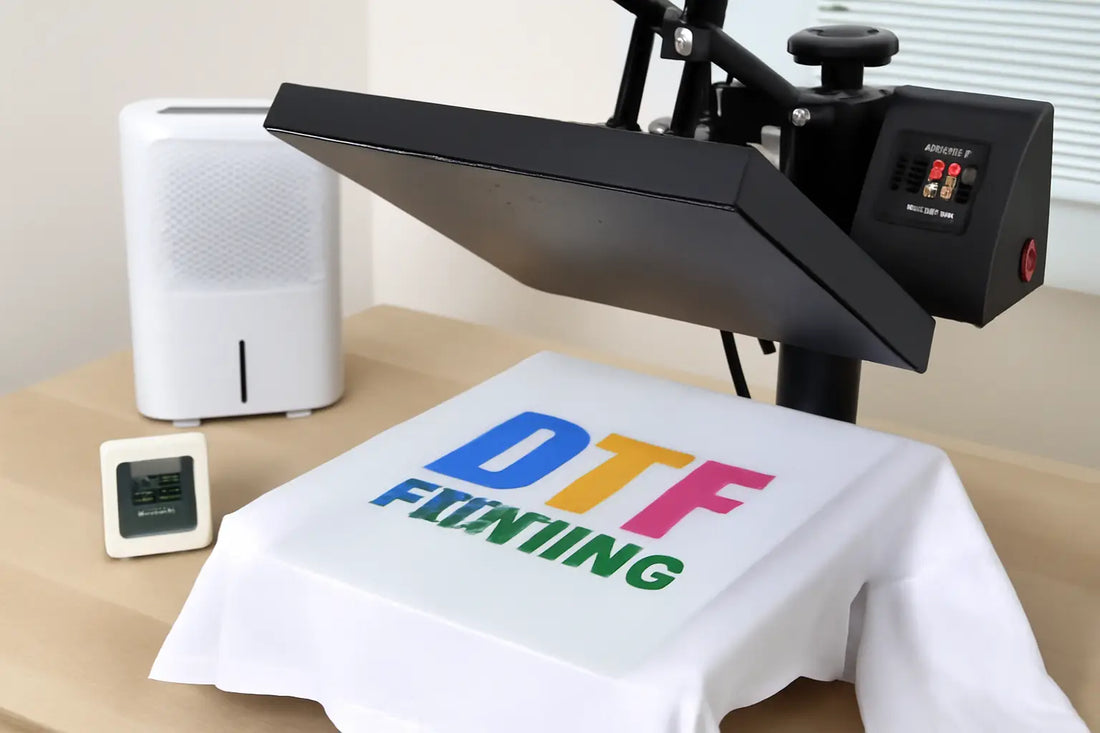DTF Printing Temperature Settings: How Humidity and Temperature Affect the Quality
If you are experiencing problems with your DTF transfers, one potential issue could be incorrect DTF printing temperature settings. Direct-to-Film (DTF) printing has become extremely popular quickly because it works on a wide range of materials, delivers high-definition colors, and is compatible with various fabrics. However, if you are not careful about the environment, DTF can turn into a nightmare with heavily distorted prints. That’s why understanding DTF printing environment conditions is so important.
In this post, we'll discuss how a damp environment and heat can impact every aspect of DTF printing, from the behavior of the ink to the drying of the powder. You will find some easy tips to keep your workspace optimally maintained, which can help avoid DTF print quality issues that lead to rework.
Why DTF Printing Temperature Settings Are a Big Deal
DTF printing follows sequential steps: You print the design on a film, put on some sticky powder, dry the powder, and then iron it onto the fabric. If the humidity and temp change, it can screw up any of these steps. These DTF printing troubleshooting tips can help you identify the issue quickly.
If the room temperature is too high, it can lead to:
-
Blurry prints.
-
Powder that won’t stick.
-
Ink that cracks or fades.
-
Weird shadows or shifts.
-
The print heads are getting jammed.
- Colors that aren't the same.
Let’s get into the details about how humidity effects on DTF printing.
1. How Humidity Can Ruin DTF Prints
A. Ink Issues
If it's super damp, DTF ink can take forever to dry. The air is full of water, so the ink doesn't dry like it should. This can cause:
-
Smudges on the film.
-
Ink spreading, especially on tiny details.
- Colors are off.
If it's not damp enough, the ink can dry way too fast, which leads to:
-
Jammed print heads.
-
Prints with lines or missing spots.
-
Ink cracking when you move it.
Humidity levels are the common DTF printing issues and can cause moisture problems in DTF printing, which can lead to DTF print not sticking.
B. Adhesive Powder Problems
Humidity also messes with how the adhesive powder adheres to the ink:
-
If it's humid, the film or ink can get damp, so the powder won't stick right, and you'll get blotches.
- If you leave the powder out in the damp, it can soak up water and clump, so it doesn't work as well.
These are classic DTF powder curing issues, especially in shops that don’t monitor humidity.
C. Static and Shadows
If it's not humid, you tend to experience more static electricity. That can make the film or clothes move when you're ironing, which is why you get those shadow images. You may also notice fuzz sticking to your film, which can make the print appear unappealing. That’s one of the DTF (Direct to Fil) transfer errors that’s easy to prevent with steady moisture levels.
2. How Heat Messes Up DTF Printing
A. Ink Being Stable
If it's too hot, the DTF ink can get weird, especially if it’s running all the time. The heat can make:
-
The ink dries in the nozzles, so they get jammed.
-
The colors change, mostly to black.
-
The ink goes on unevenly, especially if it's also humid.
If you keep ink in a hot place, it'll deteriorate more quickly, and your prints won't look as good. This is why proper storage temperature for DTF films and inks really matters.
B. Powder Drying
Drying DTF powder just right is key. If it gets too hot:
-
It can melt too much, so the transfer is shiny or sticky.
-
It won't stick as well, so it peels after you wash it.
- The edges can burn or change color.
If it's too cold, then the powder won't melt enough, so it won't stick well when you iron it on. You’ll run into issues like peeling and fading.
C. Ironing Problems
If the room is already hot, the iron might go overboard, causing:
-
Transfers that are too hot (they can scorch, lose color).
-
Pictures that are distorted due to excessive pressure.
- The film is cooling too fast or peeling wrong.
Heat press temperature fluctuations can throw off your consistency, and that’s why temperature and humidity in heat pressing are important to control. Also,
3. How to Know If It's Too Hot or Damp
You might have a problem if:
-
Prints crack, peel, or fade after washing.
-
Print heads keep getting jammed.
-
Ink smears or doesn't dry right.
-
The film bends, curls, or has static.
- The transfer doesn't stick to the fabric.
These things often change with the weather, so it’s good to keep an eye on the conditions if you're serious about DTF printing and want to follow the best temperature for DTF transfers.
4. Ideal Environmental Conditions for DTF Printing
Maintaining a controlled workspace is one of the easiest ways to improve consistency in DTF output. Here's what experts recommend:
|
Parameter |
Ideal Range |
|
Temperature |
20°C to 25°C (68°F–77°F) |
|
Relative Humidity |
40% to 60% |
Any environment too far outside this range can begin affecting performance and lead to errors or ink instability.
5. Keep Your Print Room's Humidity and Temperature in Check
A. Get a Hygrometer and Thermometer
First, watch your room’s environment with good digital sensors. Place one near your heat press and another in your workspace.
B. Handling Humidity
How to control humidity in a print shop? Follow the following steps:
Too Humid?
-
Get a dehumidifier, especially if you're in a basement or it rains a lot where you live.
-
Keep PET film and powder in closed containers with silica gel packs.
- Keep stuff off the floor, especially if it's concrete.
Too Dry?
-
Use a humidifier when it's dry or the heat is on.
- Spray a bit of anti-static spray on your workspace and films.
C. Temp Tricks
-
Use AC or a portable cooler when it’s hot.
- Keep powder curing units in areas with good airflow to prevent heat from building up.
- Avoid placing them near windows, heaters, or in direct sunlight.
D. Where to Put Stuff
-
Keep DTF ink at a normal room temp (not in garages or attics).
-
Keep the adhesive powder sealed in a dry, airtight container.
- Don’t leave PET film exposed to humid air for an extended period.
These simple fixes help you dodge temperature problems, reduce waste, and get clean, long-lasting transfers.
6. How to Get the Same Awesome Results Every Time
-
Warm up your clothes to remove moisture before pressing.
-
Let the printed transfers sit for a while before curing to ensure the ink is stable.
-
Do test prints after the weather changes a lot (like from summer to winter).
- Consider investing in a climate-controlled print room if you frequently print or use it for business purposes.
Final Thoughts
With DTF printing, temperature and humidity matter a lot – they really change how your prints turn out. If you don’t watch out for DTF printing temperature settings, you might waste printing resources, get mixed results, and have unhappy customers.
By understanding how heat and moisture affect ink, film, powder, and fabric, you can create a workflow that takes into account the settings to avoid temperature-based errors.
Try our DTF Sample Pack and UV DTF Sample pack to check how DTF transfers may react in your environment.


